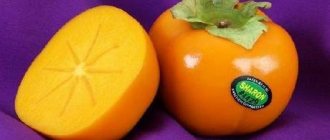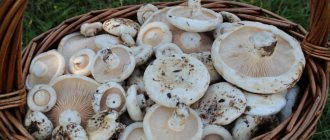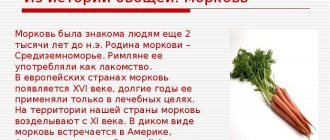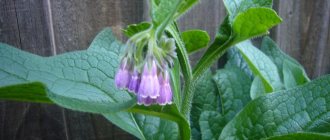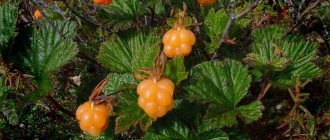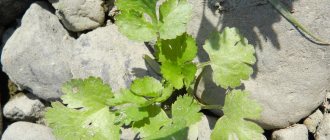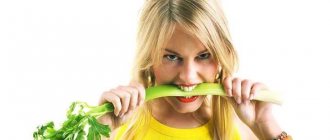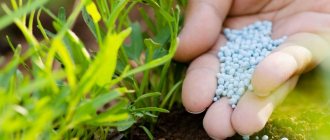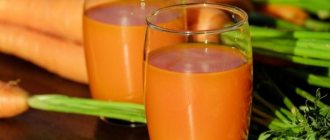General information about root vegetables
We will tell you what beets are, whether they are a vegetable or a fruit, and what the root vegetable looks like.
- Definition . Beets are a root vegetable and not a fruit, as some people believe.
- What does it look like? The appearance of the vegetable depends on the type of root vegetable. Table beet is a rosette of large petiolate, elongated, elliptical leaves with a round root protruding from the soil. What color can a root vegetable be? There are types of red, burgundy or black and purple colors.
- Botanical description . Beetroot belongs to the biennial plants of the Amaranthaceae family, which produces leaves and roots in the first year. And already in the second year of life it produces a flowering branched stem, flowers (greenish or white) and seeds.
Structure .
In its first season, the plant is crowned with basal leaves with a shortened stem. A root vegetable is a modified root with a head (upper part), a neck (the thickest - the main one, used for food), and a root (radicular processes in the lower part). The second period for beets is marked by the appearance of flowering shoots (stems) from the apical and lateral buds of the root head. Leaves and panicle inflorescences grow on the stems, on the shortened branches of which 2-5 bisexual flowers are placed. The fruit-nut is formed by cross-pollination. When ripe, they grow together into fruits, which are also called glomeruli. There are seeds inside them under the cap.People often wonder what beet tops are called. The tops or leaves of beets do not have a separate name. They should not be confused with the separate chard variety.
- How is it different from beetroot ? Buryak translated from Ukrainian or Belarusian means beet.
How to choose when purchasing
If you want to purchase high-quality and ripe root vegetables, then follow the rules below when purchasing:
- It is best to buy young beets.
- Burak should be firm, since a limp vegetable is a sign of long storage.
- Do not buy fruits that are damaged or rotten. The seller may give you a discount and tell you that such beets can be trimmed, but it’s better to pay more and buy a young alyssum.
- The color of a quality vegetable ranges from dark red to dark burgundy.
The best place to buy root vegetables is at a market where people sell their own products. Supermarket products are grown in large agro-technical enterprises, where quality takes a back seat. The main goal of entrepreneurs is a high level of productivity, which is most easily achieved by adding chemical additives to the soil with vegetables.
Biological features
Biological features. Food beets are heat-loving. Germination is possible at +5C, optimal - +20C, +15... +18C - before the formation of the root crop, and after - +20...+25C.
If the weather is cool throughout the entire growth period (0...+10C), then there is a high probability of rapid formation of flowering flowers.
The plant is light-loving. Beets respond well to moisture and, with abundant irrigation, give good weight gain.
Table beets prefer moderate irrigation . This will prevent it from becoming fibrous or loose. Sandy or loamy soil rich in humus is suitable for planting.
Beets really don't like acidic soil. Even with low acidity, yields drop sharply. In this case, experts advise liming the soil.
History of origin
Modern food beets come from wild ones that grew in the Far East and India. She was known as far back as 2000 BC. and was used as a vegetable and medicinal plant. The cultivation itself took place only after almost 1000 years. It is interesting that at first the tops were eaten as food, and the root was used as medicine.
It is also mentioned that the ancient Greeks sacrificed it to Apollo. Very little time has passed since then and 500 BC. In Asia, beet root was first used as food. Only at the beginning of AD. Cultivated forms of ordinary root beets began to appear. In our area (Kievan Rus) it appeared only in the 10th – 11th centuries .
How to use it in cooking
Not only beet fruits are used in cooking; chefs also use the leaves for preparing dishes. Based on the root vegetable you can prepare:
- okroshka or borscht;
- beetroot, botvinya;
- vitamin salad seasoned with vegetable oil (+ prunes, dried apricots or raisins);
- vinaigrette, herring “under a fur coat”;
- “Brush” salad based on beetroot, carrots and white cabbage.
In addition to the above traditional dishes, beets are used to prepare a variety of exotic desserts:
- sorbet (delicious ice cream that does not contain dairy products);
- marmalade, Turkish delight, various pies and pastries;
- fruit salads made from exotic fruits, the highlight of which is the addition of beet slices.
The root vegetable goes well with almost any dish; in addition, it is often used as a natural coloring for marinades and dressings.
How to cook delicious beetroot soup, watch the video
Chemical composition
Table beets contain:
- proteins;
- fats;
- carbohydrates;
- fiber;
- vitamins (B1, B2, P, PP);
- sugar (glucose, fructose, and up to 25% sucrose);
- acids (ascorbic, pantothenic, folic, oxalic, citric and malic);
- mineral salts (magnesium, potassium, calcium, iron, iodine, manganese, cobalt, sodium, phosphorus);
- coloring matter (betaine (alkaloid-like substance), corotenoids, pectins, pigments);
- amino acids (valine, lysine, arginine, histidine, etc.).
The tops contain ascorbic acid, carotene, coloring matter, betanin and betaine.
Action and use of beets
Medical and dietary product. Betaine and betanin in combination with other substances help strengthen capillaries, reduce blood pressure, the amount of cholesterol in the blood, improve fat metabolism, and liver function. Betaine has a beneficial effect on hypoacid gastritis and inhibits tumor growth. Pectin substances suppress putrefactive processes in the intestines, play the role of a detoxifier, and bind heavy metal salts in the intestines. Organic acids and fiber stimulate intestinal secretion and motility, which is used for spastic colitis. A high iodine content is important for activating metabolism, especially in obesity, suppressed thyroid function, and in old age. Magnesium helps lower blood pressure. The combination of vitamins with iron has a stimulating effect on hematopoiesis. Beets are indicated for people suffering from thyrotoxicosis, atherosclerosis with concomitant cardiovascular disorders. Beets have a diuretic, mild laxative effect that regulates the digestion process, enhancing intestinal motility, promotes the removal of toxins, and is used for constipation, impaired intestinal function, and obesity. The root vegetable in the form of a paste is applied to ulcers and tumors. Fresh juice is used for hypertension, liver diseases, anemia, increased excitability, inflammatory lung diseases, as a therapeutic and prophylactic agent in geriatric practice; most useful for anemia, diseases of the digestive tract, and kidney diseases. Fresh beet juice is considered a general tonic and improves metabolism; used for anemia, scurvy, exhaustion, pneumonia, bronchitis, pulmonary tuberculosis, hypertension, and also for kidney diseases. In dietetics, beets are recommended for diabetes, anemia and for regulating digestion. Beets are indicated for people suffering from thyrotoxicosis, atherosclerosis with accompanying cardiovascular disorders, due to its low calorie content, the presence of a large amount of vitamins and mineral salts, especially potassium, which has an antiarrhythmic effect, magnesium, which has a hypotensive effect, and iodine, which has a positive effect on cholesterol-lipid metabolism. Table beets in the form of salads, vinaigrettes, and beetroot soups are useful for patients suffering from obesity, hypertension, constipation, and liver and kidney diseases. Boiled beets are very high in calories; It is eaten for hypertension. Boiled beets and their decoction have a diuretic and laxative effect; for persistent long-term constipation, the decoction was used in enemas. Beetroot dishes are good for heart patients and the elderly. Raw and pickled beets have an antiscorbutic effect (used for anemia, scurvy). Boiled beet juice in the form of drops is recommended in the nose for a runny nose. The juice of the root and leaves is sucked into the nose for a runny nose; for ear plugs, it is injected into the ears. For headaches, the leaves are placed on the forehead. Crushed, crushed leaves are used as an anti-inflammatory agent and applied to inflamed eyes and areas of the body. For external inflammatory processes and ulcers, in addition to internal consumption of juice, it is recommended to apply root vegetable gruel to the affected areas for a long time, changing it as it dries. Boiled beet salad, consumed on an empty stomach, has a laxative effect. In Rus', beets were used, in particular, for scurvy, tuberculosis, anemia, hypertension, constipation, cancer, as an anti-inflammatory agent for toothache, and runny nose.
Benefits and harms for humans
Beneficial features:
- Beetroot is the first aid for chronic constipation. It not only affects the intestines, but destroys putrefactive bacteria.
- It is an excellent regulator of fat metabolism, liver function and blood pressure (hypertension).
- The vegetable perfectly helps not only the health of the body (analgesic, anti-inflammatory, diuretic, antispasmodic, anti-sclerotic, anti-scorbutic, wound-healing, tonic), but also the psyche, as it copes excellently with depression.
- The plant helps the body in hematopoiesis.
- Folic acid in beets is very necessary for pregnant women and those who are just planning a baby. It helps to form a healthy nervous system in a small embryo.
- The high iodine content helps compensate for its deficiency in the human body.
- Betanin contained in beets prevents the development of malignant tumors.
- The low calorie content of the vegetable will please any dieter.
Harm:
- Beets do not allow calcium to be absorbed, and the sugar they contain can raise blood sugar.
- Oxalic acid can worsen the situation with urolithiasis.
- The pronounced laxative effect will harm those suffering from diarrhea.
Usefulness for women and men
Beets, rich in many useful substances, are recommended for consumption by both young and old people. Benefits for the male body:
- the components of the vegetable help disinfect the intestines from harmful bacteria and pathogenic microorganisms that can provoke pathologies of the reproductive system;
- beet juice contains a lot of zinc, which is important for the normal functioning of the prostate;
- beta-carotene helps prevent the development of benign prostate tumors;
- fresh beets are used in folk medicine to treat impotence.
Beetroot is no less useful for the female body. This usefulness is due to the fact that:
- the vegetable perfectly relieves pain and stops bleeding during menstruation;
- beetroot masks increase skin turgor, improving the condition of the skin and smoothing out fine wrinkles;
- the vegetable helps normalize hormonal levels during menopause;
- salads with the addition of fresh or boiled beets improve digestion and promote weight loss;
- The root vegetable serves as an excellent preventative against atherosclerosis and arterial hypertension.
The red vegetable has a positive effect on the body of expectant mothers. It helps to cope with difficulty defecating, relieve swelling, improve metabolic processes, strengthen the immune system and prevent fetal malformations.
For older people, this root vegetable helps cope with age-related diseases, as well as improve both physical and psycho-emotional well-being.
Contraindications for use
Avoid using this vegetable if:
- Kidney stones.
- Diabetes mellitus.
- Diarrhea.
- Some gastrointestinal diseases.
- Hypotension.
- Kidney failure.
- Allergies.
During pregnancy, beets are a must . It has everything for mother and baby. Unless, of course, there are problems listed above.
Allergy
The allergy is caused by intolerance to sulfates, which were once used to fertilize the crop. Another cause of allergies is the body's intolerance to glucose or fructose, which breaks down from sucrose. This may be caused by a malfunction of the internal organs of a person.
Children also often suffer from allergies to vegetables, “thanks” to a lack of digestive enzymes or a large amount of fiber in the product, which irritates the children’s intestines, and also causes colic and bloating. Infants receive allergens from their mother's milk. Read about whether beets are allowed while breastfeeding.
How to drink beetroot decoction for gallstones?
There are dozens of recommendations telling you how to properly make beetroot broth to cleanse the liver. It is important to remember here: this is an organ, not a frying pan, to be “cleaned”, and the treatment of specific diseases should be carried out by a certified doctor. Especially when it comes to such a serious condition as gallstone disease. Especially if they are large stones. However, since recipes exist, it is better to know about them than to be ignorant.
Here is one of these folk recipes : two root vegetables are washed, peeled, and cut into thin rings. Then they are placed in a pan and filled with water. Cook for several hours with the lid closed until the slices are completely softened. The resulting mass is cooled, filtered and drunk several small sips throughout the day.
Types of beets with photos
There are 4 types of beets: 3 according to ripening period (early, medium, late) and 1 according to structure (here we mean leafy). We'll show you what each variety looks like in the photo.
Early ripening
This type of table beet includes:
Pablo F1
A round, purple-colored, medium-sized root vegetable with thin skin and sweet pulp.
Detroit
A small ball-shaped fruit of red color without rings, pleasant to the taste.
Bordeaux 237
A medium-sized round root vegetable with red, pleasant-tasting pulp.
Modana
Neat in shape and pleasant to the taste without rings of burgundy-cherry color.
Boltardi
A round, dark red root with radial rings.
Mona
A dark red cylindrical vegetable.
Egyptian flat
Round, slightly flattened at the poles, color – burgundy with a purple tint and light rings.
Red ball
A rounded root vegetable of dark red color with juicy pulp.
For sugar beets:
Saplica
The conical root vegetable is white in color and of medium weight with a high sugar content.
Mid-season
Mid-season varieties of table beets include:
Borscht
The round fruit is red.
Opolskaya
Red in color, oblong in shape with thin skin.
Mulatto
The fruits are spherical in shape with a pleasant dark shade.
Incomparable A 463
A large flat-round root vegetable of dark cherry color.
Delicatessen
Round, small in shape with dark cherry-colored flesh without rings.
For sugar:
Pingus
Root vegetable with a conical shape, white color and high sugar content.
Crystal
Cone-shaped white root.
Typhoon
Cone-shaped white root.
Late mature
Renova
A cylindrical root crop of red-violet color.
Single shoot
Flat-round shape, dark burgundy color with juicy flesh.
Cylinder
A small cylindrical red root vegetable.
Citadel
A small cylindrical fruit of burgundy color.
Leafy
Chard
Type of Swiss chard. Only the leaves, which look like lettuce or spinach, are eaten. Chard surpasses them in taste and quality.
Fodder beets cannot be classified into any type based on their ripening period, although some of them are close to mid-ripening.
Lada
The oval-cylindrical fruit is white or pinkish-white.
Hope
It has a red oval-elongated root crop, white pulp.
Milan
White, oval-shaped root vegetable.
Vermont
Medium-sized, cylindrical-conical white fruit.
Jamon
The yellow-orange fruit is cylindrical-conical in shape.
Starmon
The fruit is yellow in color and conical in shape.
Centaur
The root vegetable is semi-sugar, white, oval in shape.
Ursus
Semi-sugar type with a cylindrical fruit of yellow-orange color.
Record
Cylindrical-conical fruit of pink color.
Kyiv Pink
Orange root vegetable of cylindrical-oval shape.
Brigadier
An oval-cylindrical root vegetable of orange-green color with a high sugar content.
Beet varieties
Ordinary beets are divided into three groups:
- dining room;
- sugar;
- stern
Table beets are divided into two main types: white and red. Differences in colors do not affect the taste in any way.
The white root vegetable tastes similar to its red comrade, but it is used in those dishes where the red color is undesirable. Table beets come in spherical and cylindrical shapes. The size and weight of the fruits vary from several grams to several kilograms.
There are also sunny yellow and striped beets, which breeders bred for decorative purposes, although such vegetables are also used as food.
Sugar beets are in most cases grown for industrial purposes for their further processing into ethanol and sugar. Such root vegetables are snow-white in color and contain up to 22% sucrose. Beetroot sugar is used as a natural sweetener for compotes, fruit salads, syrups, etc.
Fodder beets are grown for farm animals. It contains almost the same substances as the table root vegetable. The only difference is that fodder beetroot contains more fiber and protein. In addition, it is easier and more profitable to cultivate, as some specimens reach a weight of 20 kg or more.
Step-by-step instructions for growing
- Variety selection .
Varieties are selected depending on the soil and needs. - Preparing the site for planting.
It is good to loosen a warm sunny place. Fertilize soil poor in minerals in the fall.- The best predecessors : tomatoes, peppers, cucumbers, pumpkin, zucchini, greens, legumes, grains, onions, garlic.
The worst are potatoes, cabbage, radishes, carrots, celery, chard, fodder, sugar, and table beets.
- Seed treatment .
Soak them in water at room temperature for several hours. Then throw away any that float. After draining the water, wrap it in gauze and immerse it in a solution of Epin, Zircon or others for a period of 0.5 to 4 hours. After the solution, let the seeds lie in a warm place for 12-24 hours so that they swell and hatch. Now you can start planting. - Planting beets in open ground.
Seeds must be placed in warm soil to a depth of 2 cm at a distance of 4-10 cm from each other and covered with soil.The distance between rows for small fruits is 10-15 cm, for large ones – 20-30 cm. The seeding rate is approximately 8-12 kg of seeds per 1 ha.
- Beet care.
Irrigation of the crop is required moderately. You can use mulching (sawdust, straw, humus), which will reduce the amount of watering, loosening and weeds.Thin out in 2 stages: 1 after 2 true leaves appear on the plant; and 2 when the root reaches a diameter of 1.5-2 cm. In this case, the distance between the roots the first time is left to 5 cm, the second time - to the required distance for the selected variety.
On poor soil, the crop requires little fertilizing (infusion of mullein or chicken manure); it is also recommended to use complex fertilizer (potassium, boron, copper, molybdenum) several times. With proper care, the yield of table beets in Russia is approximately 40-50 tons per 1 hectare, for fodder and sugar - 900-1100 tons per 1 hectare.
You will find all the details on growing beets in this article.
If you grow beets on an industrial scale, then you will find our article with an overview of the types of beet harvesters and the features of planting the root crop useful.
Use in folk medicine
Traditional healers use beet fruits, its leaves and juice to treat many diseases. You can be treated with root vegetables without fear, while pharmaceutical drugs have a lot of side effects.
For anemia
With anemia, a deficiency of the mineral ferum (iron) occurs in the patient's body. Beetroot juice contains many of these minerals, so it is effectively used to restore normal blood counts. To safely treat anemia, make juice from fresh beetroot, carrots and radishes. Use 1-2 tbsp. l. of this juice 3 times a day before each meal. Continue the therapeutic course for at least 2 months.
The first mention of beets can be dated back to the 10th–11th centuries AD.
For anemia, beet salads can also be beneficial, to which you can add nuts and prunes (they also have a beneficial effect on blood composition). Boiled beets cleanse the blood of heavy metal salts and remnants of pathogenic microorganisms.
For a runny nose
Beetroot juice is an effective remedy against runny nose of infectious etiology. It has been used to treat cold symptoms since ancient times, as it has the following beneficial properties: dilates blood vessels and restores normal breathing, thins thick secretions and specifically fights pathogenic microorganisms in the nasopharynx.
But the juice for instillation into the nose must be properly prepared so that it does not cause burning and allergic reactions:
- We wash the fresh beets and, after removing the peel, squeeze the juice out of them.
- Leave the juice in the refrigerator for 3-4 hours.
- After the specified time has passed, take the juice out of the refrigerator and leave it for a while (until the liquid reaches room temperature).
- Mix concentrated juice with pre-purified water in proportions 1:2 (for adults), 1:3 (for children under 12 years old).
- The product must be instilled 3-4 times a day for a week or until complete recovery.
For constipation
If you want to get rid of constipation within 6-8 hours, prepare fresh beet juice. Adults should drink a glass of this drink 30 minutes before breakfast. Breakfast should consist of fermented milk products (low-fat cottage cheese, kefir, acidophilus). Constipation in children from 7 to 12 years of age should be treated in the same way, but the dosage should be reduced by 2 times; for children under 7 years of age, the dosage should be reduced by 4 times.
Diseases and pests
Fomoz is a fungal disease that causes spots on the lower leaves and dry rot inside the root crop. Such symptoms mean a lack of boron; fertilizing with boric acid is required.
- Cercospora blight is a lack of potassium, which is reflected in leaf damage and deterioration in the growth and development of root crops. Feeding with potassium chloride or ash is required.
- Downy mildew (downy mildew) - covers the underside of the leaf with a gray-violet coating and causes it to rot or dry out. It is necessary to spray with fungicides and preferably before the disease appears, as a preventive measure, in the phase of 2-3 leaves.
- Root beetle is an infection that affects seedlings (the stem becomes thinner, turns black, and the plant dies), with a lack of aeration on heavy, damp soils.
- Fusarium - occurs when there is insufficient watering, while the cuttings darken, and the root crop itself cracks and becomes covered with a white coating.
- Brown rot does not allow root crops to be grown on the site for 4-5 years. The causes of the disease are high humidity and excess nitrogen. It appears as a brown or white coating on the root crop.
How to give to children?
For the first time, beetroot puree (half a teaspoon) is given no earlier than 8-12 months after the birth of the child. After taking a new product, you need to look at the body's reaction. If there are no violations, feel free to increase the dose. I suggest beet juice no earlier than 12 months. It also needs to be handled with caution and introduced into the diet in small doses (2 drops). We talked about this in more detail in another article.
Calories and nutritional value
100 grams of raw root vegetables contain 42.7 kcal . Carbohydrates in beets occupy 3.7% of the total mass, proteins - 1.6%, the total part of fats - less than 0.1%. Among carbohydrates, the largest part falls on simple carbohydrates, the mass of which in 100 grams of product is 6.7 g.
In almost every country in Europe, during the plague epidemic, people drank beetroot juice as a preventative measure.
Boiled beets contain slightly more calories, but the difference is not significant, and the cooked root vegetable is also suitable for people trying to lose weight. 49 kcal per 100 g of boiled beetroot . This product contains virtually no vegetable fats. Proteins per 100 g of product - 1.8 g, carbohydrates - 10.8 g.
Interesting Facts
In ancient Rome, beets were considered a symbol of quarrels, discord and gossip. If a person wanted to communicate his dislike for another, then he would throw a vegetable into his house. In many cultures, it was believed that if a man and a woman took a bite of the same beet fruit, they would fall in love.
Historical fact: in 1975, during the Apollo-Soyuz test project, Soviet cosmonauts treated their American colleagues to beet borscht. The Delphic Oracle claimed that beets had mystical powers. “Accepting a favor in the beet fields” - this phrase meant visiting brothels in the beginning. XX century
Using beet juice, you can measure acidity : adding it to an acidic solution, the liquid will turn pink, and in an alkaline solution it will turn yellow.
How can it be used for cosmetic purposes?
Masks and scrubs based on beetroot will cope with pale and aging skin, and improve the condition of dry and sagging skin. The root vegetable is an excellent remedy against dandruff and weak hair.
For facial skin
Pectin, potassium, betaine and ascorbic acid are important components of beets that will moisturize the skin, give it elasticity and firmness.
Nourishing mask
To prepare a nourishing mask based on beetroot, the vegetable must first be boiled and then grated into small pieces. Add yogurt or low-fat sour cream to the resulting slurry in a 1:1 ratio. This mask should be applied daily half an hour before bedtime. It will cope with problematic skin, saturate it with vitamins and minerals, cleanse pores and give elasticity.
Watch the video for the beetroot mask recipe.
Moisturizing mask
Moisturizing masks based on beetroot are suitable for dry and problem skin:
- Recipe 1.
Boil small beets (150-200 g) and make a paste out of it. Add a tablespoon of milk and 1 tsp. aloe juice Apply the mask before going to bed for 20-25 minutes. - Recipe 2.
Squeeze out some beet juice and mix it with cream in a 3:1 ratio. Apply this mask to your face daily for 15-20 minutes.
Masks based on beets with the addition of mineral water, honey and natural green tea will also have a moisturizing effect.
Facial scrub
Store-bought scrubs do not always provide the desired effect; in addition, they can cause allergic reactions and other side effects. Prepare a natural face scrub based on boiled beetroot: grind a small root vegetable into a paste using a grater and add a tablespoon of oatmeal. Without waiting for the flakes to swell, start using the scrub.
For hair
Burak has a beneficial effect on hair roots and follicles. Beetroot juice is used to treat and color hair. It gives them silkiness, fluffiness and helps strengthen them.
Hair coloring
Hair coloring using the root vegetable is an effective and safe method, since natural beet juice does not contain harmful chemical compounds. With the help of beetroot, you can give a dark shade to the hair of blondes and make the hair burgundy-black in the case of brunettes.
To relieve a hangover, make fresh juice from beets, oranges, apples and carrots and drink it 4-5 times a day, 100-150 g.
To prepare a natural dye, squeeze out some fresh beetroot juice and add henna powder to it. Mix these ingredients until a homogeneous consistency is formed and apply only to dry hair using a sponge.
Dyed hair is covered with a plastic cap for 15 minutes, after which the paste can be washed off without shampoo. For a longer lasting coloring effect, periodically rinse your hair in diluted beetroot juice.
Strengthening mask
A hair mask based on aloe and beets has an excellent strengthening and healing effect. To prepare and place the mask correctly, follow these recommendations:
- Make a paste from aloe leaves and squeeze a glass of fresh beet juice.
- Mix the two ingredients until a homogeneous consistency is formed.
- Apply the resulting mask to your hair, while performing massaging circular movements.
- Put on a cellophane cap and leave the mask on your hair for 40-50 minutes.
- Rinse off the mask with warm running water without using shampoo.
It is recommended to perform such procedures weekly to enhance the therapeutic effect.
Anti-dandruff
To get rid of annoying dandruff, apply boiled beetroot pulp to your scalp and hair (you can apply fresh, previously grated). After applying the mask to your head, put on a cellophane cap.
The mask should be left on for half an hour, then washed off without shampoo. Such procedures must be carried out 1-2 times a week for 2 months. From time to time you can wash your hair in the water where the beetroot was boiled.
Can it be used to feed animals?
Table beets are highly discouraged for animals. In exceptional cases, it can be given in small quantities: to piglets, cows, sheep in raw or freshly brewed (not boiled or recently brewed) form. For hamsters and rabbits, boiled or raw, the size of a marigold.
Eating beets has a beneficial effect on human and animal health. People prone to chronic diseases can consume vegetables in small quantities and carefully. It is recommended to give animals special (fodder or sugar) beets, especially since they are not only healthy for them, but also tasty. We wrote in more detail about beets in animal diets here.
How to cook beets for weight loss?
You can prepare beets for weight loss in a variety of ways, but the product will have the best effect in its raw form and in the form of juice. In cases where eating raw foods is contraindicated, or if you want to diversify your daily diet, the root vegetable can be boiled or baked. Let's look at the basics of preparing beets in table form:
| Type of cooking | Cooking time | Notes |
| Boiled beets | 40-60 minutes | The product is cooked over low heat in a large container, where water covers the vegetable by at least a few centimeters. The root vegetable must be thoroughly washed and boiled in the peel, which should preferably be left intact. After cooking, pour cold water over the beets until they cool completely. |
| Baked beets | 50-60 minutes | To bake, the beets need to be washed and dried, then put on a baking sheet and cover with foil. It is not advisable to cut the fruit, otherwise during the cooking process it will lose some of its beneficial properties. |
According to nutritionists, men, women and even children (who are obese or at risk) need to replace one meal, no matter what it is (dinner, breakfast or lunch), with a beet dish. For example, in the morning on an empty stomach you can drink beetroot juice, about 20 minutes before meals - it will reduce the feeling of hunger and you will eat less than usual.
But you can’t limit yourself to just juice, otherwise after 35-40 minutes you will wake up feeling hungry due to the glucose content in beets. At night, it is recommended to eat a diet salad of beets with apples, carrots or cabbage; you can season such salads with kefir. In addition, it is useful to periodically arrange a fasting beet day, but only on the condition that you do not have any of the diseases described below or contraindications associated with allergic intolerance.
